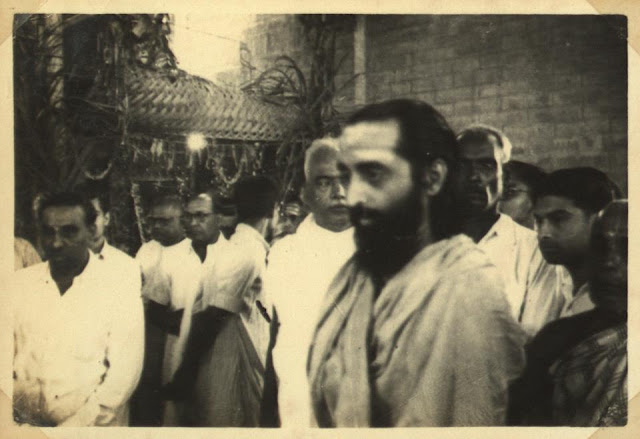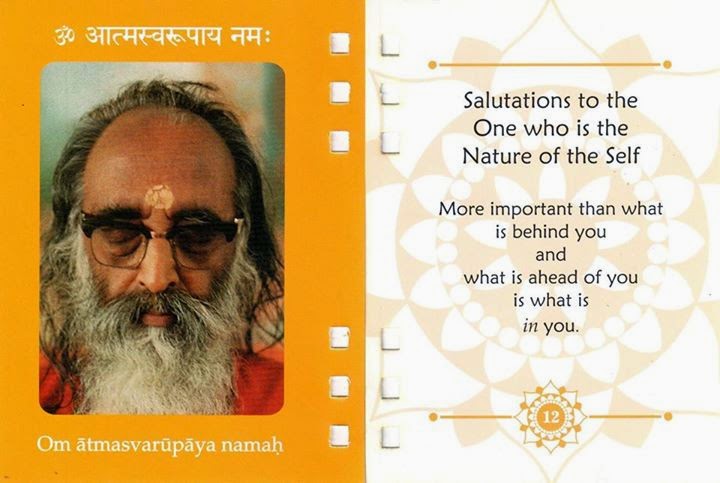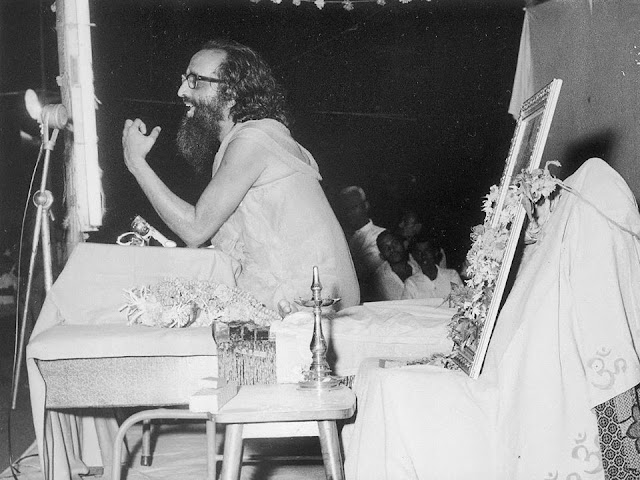MANDUKYA UPANISHAD : INTRODUCTION-4.

Swami Chinmayananda early photo MANDUKYA UPANISHAD INTRODUCTION-4. It is also true that in between rains when the frogs together sit up and croak their throats out, as it were, in non-stop palpitations, the folks of the world have come to expect a greater shower of tearful rains to descend upon the melancholy fields. Similarly, in life, through conscious and unconscious misdeeds, when men as a community of misguided enthusiasts come to slip down to the morass of world problems, there is always a descent of God-men upon earth, who bitterly condemn the age and boldly declare the glorious Truth, as in Srimad Bhagavad-Gita, and ere they go back, they seen that Dharma is re-established among mankind. To be continued ... Satsangam- Chinmaya Mission- Nairobi-Kenya










